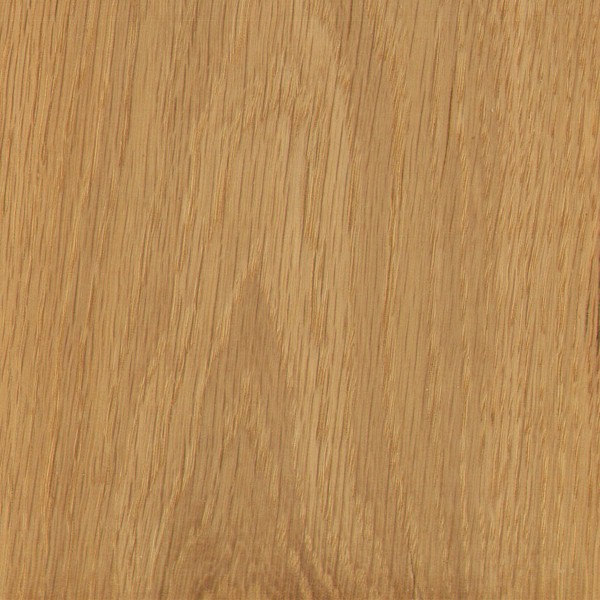Contrary to what their names might suggest, red and white oak lumber can be nearly indistinguishable to the average person. But make no mistake. While these two types share some qualities, they also feature several significant differences. These differences both set them apart and make them ideal for certain styles and decors. That being said, let’s dive in and break down red vs. white oak.
Red Oak vs. White Oak: What’s the Difference?
Let’s start with the obvious. Both red oak and white oak come from the same species of trees. But while you can break down oak trees into many different types, there’s generally two main categories: red and white.
According to The Wood Database, the designation between red oak and white oak comes down to “the morphology of the trees themselves.” In other words, red oak trees will have pointed lobes on their leaves, whereas white oaks will instead have rounded lobes. By the time the wood gets to the store, you probably won’t have leaves to help you tell the difference. So how do you decide between red oak vs. white oak?
When it comes to the lumber itself, the ends of the oak boards should be easy to identify. You just need to know what to look for. Red oak will have open pores found inside the growth rings on the end of the board. White oak, meanwhile, will have pores that are plugged with tyloses, or balloon-like swellings.
As The Wood Database notes, it’s useful to be able to tell the difference between red oak and white oak. Each has qualities that make them suitable for different types of situations. White oak, for instance, is usually more dense, although it can be harder to find and typically more expensive. Red oak, then, will often be lighter and best suited for interior builds like cabinets, furniture or hardwood flooring.
Red Oak Vs. White Oak: Durability
Right off the bat, white oak has a clear advantage when it comes to durability. White oak is rot-resistant, making it viable for any kind of build or installation that may be subject to water or condensation. By that metric, white oak would be preferable for things like outdoor furniture or even watercraft applications. Alternatively, red oak is not rot-resistant. You should not really consider it for any installation or build that could see exposure to excessive water or moisture.
Another way to determine the durability of these types of lumber is to refer to the Janka hardness test. Created by researcher Gabriel Janka, this test is measures how resistant wood is to both denting and wear. It achieves this by calculating the amount of force necessary to lodge a steel ball halfway into the wood.
On the Janka hardness scale, white oak has a score of 1360. That makes it harder than other types of wood, such as American walnut, American cherry, and yes, red oak. That’s not to say red oak is far behind, registering an absolutely respectable 1290 on the Janka hardness scale. But it does mean white oak can handle daily wear and tear than its red oak counterpart.
Note that the Janka hardness scale is most commonly used when discussing wood for the purpose of hardwood floors. However, the scale certainly has relevance when it comes to the topic of cabinets. Who among us wants cabinet doors that are susceptible to dents and wear? Both red and white oak have solid scores and are durable lumber that would work well for cabinets. White oak, though, takes the crown as the more durable type of lumber between the two.
Ease of Staining/Re-staining
If you’ve got a minute, Google the phrase staining/restaining red oak. You’ll find myriad of articles on how to stain red oak floors to make them look just like white oak. The consensus seems to be that everyone wants white oak, but they don’t want to replace their red oak. So they do the next best thing: staining red oak to make it resemble the seemingly more popular white oak.
While red oak is durable lumber, staining it to look like white oak is not easy. Red oak is characterized by pinkish undertones. These will unveil themselves if you attempt to apply any kind of light stain. In other words, white, gray and other lighter stain colors are going to be a problem for red oak. Achieving that white-oak aesthetic will most likely be more of a headache than you’d like.
White oak, by contrast, is more of a blank canvas. It will be receptive to more colors. Many choose to go the natural route and not stain their white oak at all. But it’s a type of wood that can typically hold a stain far more easily than red oak.
The Best Type of Lumber for Each Style
Up to this point, white oak has been dominating this head-to-head comparison with red oak. Not only is white oak more durable and resistant to rot, but it is significantly easier to stain and re-stain. But the red oak vs. white oak battle is not over! Still, red oak remains a solid option for many interior options, such as cabinets and hardwood floors. And, depending on the style that you’re going for, it may yet be the most desirable of the two types.

Modern
When discussing home styles, “modern” refers to an architectural and interior design that relies on a clean, simplistic and even minimalistic aesthetic. Many homes built this century, and most built in the last decade or so, tend to lean towards a modern style, utilizing lighter colors throughout the home to achieve a more futuristic and elegant look.
White oak lumber, which offers more of a gentle coloring compared to red oak, fits right in with the modern home’s design. It’s got a far more simple color scheme, which only aids the simplistic vibe that most homeowners are hoping to capture when they pursue a modern look. As The Vintage Flooring Company suggests, the wood itself typically has straight, even grain with clean lines that mesh with the neutral stylings of the rest of a modern home.
Red oak, conversely, is deeper in color. While that may be easy to infer from the naming conventions of these two types, it’s significant to point out when discussing different design styles. The deeper color of the red oak simply won’t produce the brighter, air-y feel that white oak so effortlessly nails. If you’re building a home or hoping to do a major remodel, it’s key to keep the style you’re shooting for in mind when picking a type of lumber to implement into your new floors or cabinets.
Traditional
The same deeper coloring that makes red oak an awkward fit for modern designs is the very trait that makes it a dream pairing for traditional homes. The term “traditional” here describes most older home stylings, from Victorian to NeoClassical, Old World and more. Essentially, if your home doesn’t sport a modern design, there’s a fair chance that it falls under the “traditional” umbrella.
This is where red oak truly excels. While the name is something of a misnomer – red oak isn’t explicitly red, but rather offers faint notes of the color sprinkled throughout – red oak is often characterized as a romantic choice that blends into the other classic elements of a traditional home. Red oak cabinets are a throwback of sorts to a vintage time of architecture, and depending on your personal preference, it may be the perfect option when considering a traditional-style house.
As you can imagine, white oak is a poor choice in traditional homes for the very same reason that red oak doesn’t work well in modern interiors. Its light tan coloring doesn’t mix nicely with the otherwise rustic design of a traditional home, and attempting to inject white oak into a traditional home without a complete modern overhaul would result in a mismatch that’s hard to conceal.
Farmhouse
The farmhouse style is easily the most intriguing style of the three. It utilizes practicality and comfort, and seems to borrow the best aspects of both the modern and traditional styles. In other words, a farmhouse-style home takes some of the rustic beauty of a traditional design, and incorporates several tasteful, simplistic comforts that are signatures of the modern design. Again, it’s all about personal preference when it comes to designs, and the farmhouse style certainly isn’t for some. But when done right, the farmhouse style expertly positions itself as the ideal middle man between modern and traditional.
Because of its not-totally-modern, but not-overtly-traditional aesthetic, both red oak and white oak are good fits for the farmhouse design. Red oak will hide scratches exceptionally well because of its strong graining, and prides itself on being a versatile color that fits several different aesthetics. At the same time, white oak is easier to stain to personal taste, allowing you to more precisely dial in the colors and stains of your cabinets and floors if you so choose.
For those gravitating towards the farmhouse style, choosing between red and white oak will come down to what your priorities are. If you’re willing to pay more for a type of lumber that’s more durable and stain-friendly, white oak would be a great choice. But for something that won’t cost as much and rely on its natural, deeper colorings to fit right in, red oak would be ideal.
Red Oak vs. White Oak: Which Would You Pick?
When it comes to red oak vs. white oak, there quite honestly isn’t a bad choice in the bunch. Both are quality types of lumber that are consistently incorporated into all kinds of builds and installations across the country.
What matters most is what you’re looking for from the wood that you choose to put in your home. As we’ve illustrated, both red and white oak have qualities that make themselves great (or in other cases, poor) options for different situations and setups.
It’s a bit cliche, but from a build standpoint, you won’t be able to go wrong with red or white oak. Both will serve as the foundation for strong, long-lasting cabinets. From here, it’s up to you to decide which type will work best in your own home.





